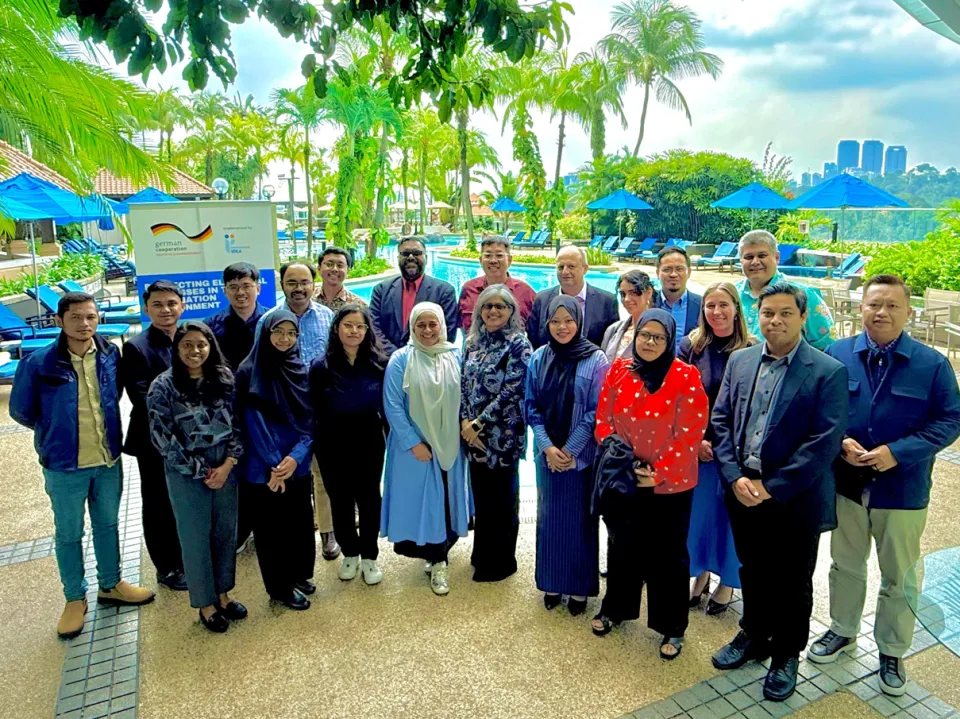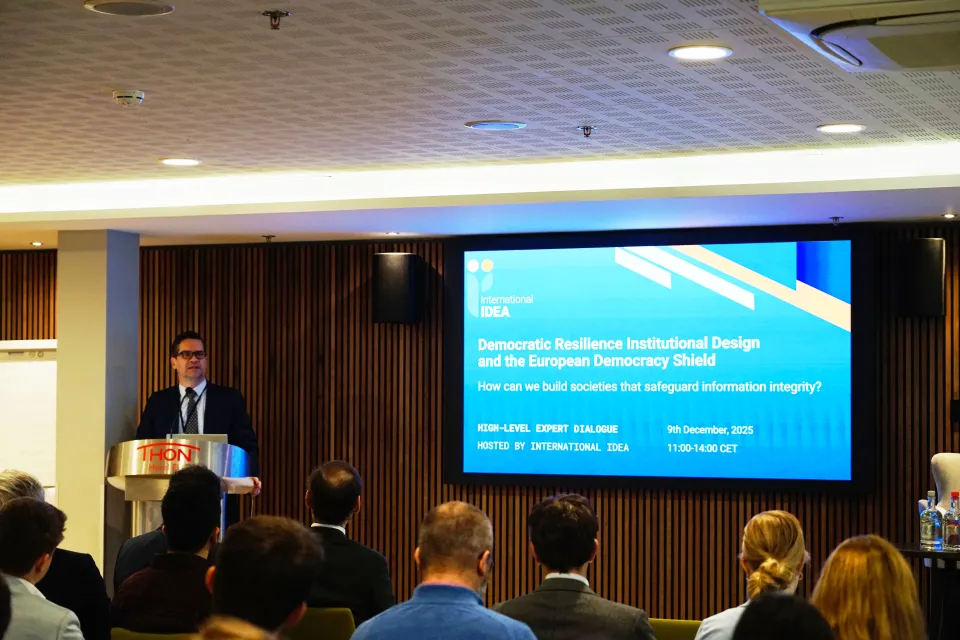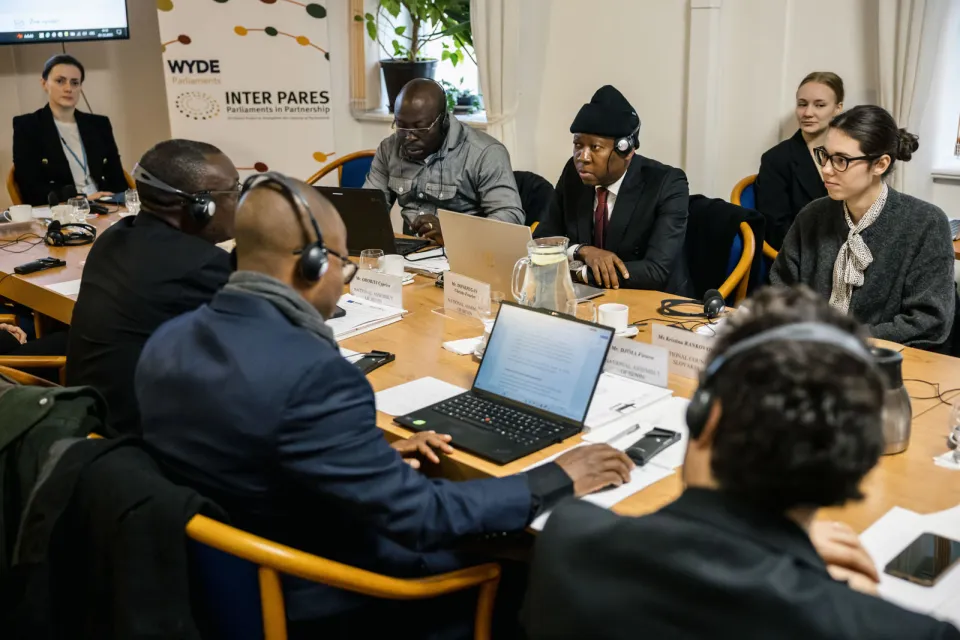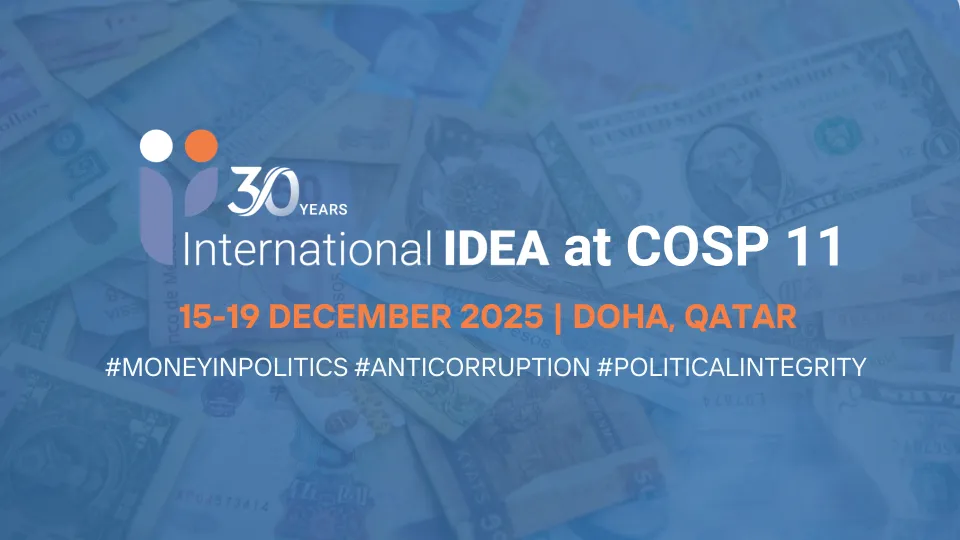
Opinions expressed in this commentary are those of the authors and do not necessarily represent the institutional position of International IDEA, its Board of Advisers, or its Council of Member States.
This blog was produced under LEGITIMULT, a project funded by the European Union under the Horizon Europe Programme, Call HORIZON-CL2-2021-DEMOCRACY-01, GA Nr. 101061550. LEGITIMULT aims to develop a model of legitimate crisis governance that takes into account the multilevel nature of policymaking, namely the interplay between international, national, regional and local governments and institutions.
While the impact of disputed or failed elections on societies is studied broadly, the influence of different crises on electoral processes has received comparatively less attention. The impact of the COVID-19 pandemic on elections scheduled during the period 2020-2022 prompted this topic to the forefront of news and research. However, this was not the first time that public health concerns have disturbed the conduct of elections. Lessons could also be learned from the US elections amid the 1918 Spanish flu pandemic, Mexican elections during the swine flu epidemic in 2009, Haitian polls during a cholera outbreak in 2010/11, and West African elections during the Ebola crises of 2013–2016.
Nevertheless, the research done during the COVID-19 pandemic pointed to the importance of continued work to study the types of crises and emergencies that may disturb elections, their effects, and options for action to ensure preparedness to navigate elections during inevitable future crises. These insights are critical for ensuring that complex multi-level governance systems and democratic institutions can maintain citizens’ trust during crises.
Regarding the types of crises to watch for, there are numerous global and national frameworks to consult. For example, WHO research guidelines provide functional groups and subgroups by distinguishing between natural (including geophysical, hydrological, meteorological, climatological, biological and extraterrestrial sub-groups), human-induced (including technological and societal sub-groups) and environmental hazards (referring to environmental degradation), while UNDDR Sendai framework for disaster reduction provides an abundance of conceptual and action-oriented global resources. Various governments and specialized agencies adopt somewhat similar typologies and approaches for dealing with crises, emergencies and disaster responses.
Many of them lack, however, a specific consideration of how crises may disrupt elections. In this regard, International IDEA's Election Emergency and Crisis Monitor has documented instances in which various crises related to natural hazards have negatively impacted the conduct of elections, allowing important conclusions to be drawn.
Crises can negatively affect elections in several ways. First and foremost, many crises – reflecting natural, human-induced or environmental emergencies and disasters – can threaten people's lives and health and cause the destruction of infrastructure. When such occurrences cross paths with key electoral events, which typically entail large-scale mobilization and participation, they can pose extreme danger to those involved. Secondly, crises can cause disruptions that undermine electoral integrity because of compromised opportunities for deliberation, contestation, participation, and election management quality. For example, emergencies and disasters can undermine the participation of citizens in affected communities, particularly vulnerable groups such as women, older people, or people with low incomes. Furthermore, the distribution of emergency funds and humanitarian aid during elections can favour incumbent officials, while emergency lockdowns may limit the functioning of democratic institutions and intrude on human rights.
Because of the variety of consequences, protecting elections in times of crisis requires a multidimensional approach focused on preventing and mitigating adverse impacts. Standard emergency management models widely applied by national emergency and disaster agencies distinguish four elements: prevention, preparedness, response, and recovery.
Applied to electoral processes, prevention may relate to risk management efforts undertaken by relevant state agencies, including electoral management bodies, to consider the likelihood and impact of different crises, particularly vis-a-vis the danger they pose to electoral actors, materials, events, infrastructure or integrity. Typically, prevention options should consider risk reduction and/or avoidance. For example, while preventing the occurrence of natural hazards and their negative impact on societies may not be possible, prevention of negative impacts on elections may be achieved by adjusting the electoral calendar to seasons during which the process will be less exposed.
Preparedness is typically two-fold. On the one hand, it focuses on building the resilience needed to withstand stresses and shocks from external crises. Such resilience is exhibited by keeping electoral processes on schedule while navigating through external crises. This may require extra effort or adopting some flexibility in how things are done. For example, during the COVID-19 pandemic, flexibility entailed introducing sanitation measures at polling stations.
On the other hand, preparedness may focus on putting in place processes that ensure the ability to recover from the harmful impacts of external crises. For example, recovery may be needed when electoral events are derailed because of disrupted timelines, when there is material damage to critical electoral infrastructure, or if the effects of crises have undermined electoral integrity to the extent that it compromises the credibility of results. Yet, the hardest damage to recover from could be the lost trust in electoral processes and institutions. As shown by research under the LEGITIMULT project, political trust, particularly during a crisis, is a fundamental prerequisite for the functioning of political processes. One should note that failed elections may themselves induce societal crises. A stark example is election-related violence in Kenya during 2007/08, which caused a deep security and political crisis, prompting constitutional changes and full-scale electoral reform to regain national trust.
Although much remains to be learned, it is evident that protecting elections in times of crisis requires putting in place a web of legal, institutional and management safeguards. In this respect, some countries are progressing in recognising electoral processes as critical state infrastructure. This ensures that electoral management bodies have the guidance and, when needed, support and resources of specialised national emergency agencies for protecting this vital democratic process.




